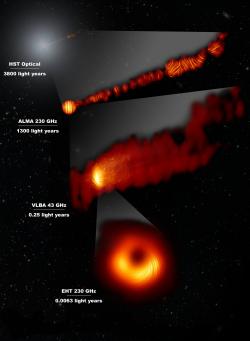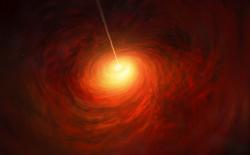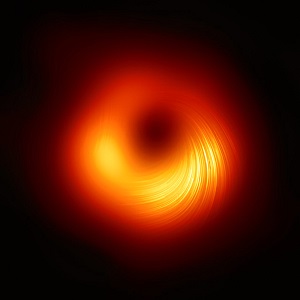The event horizon telescope revealed the magnetic fields of a supermassive monster
The supermassive black hole of the galaxy M87 in polarized light, with distinct magnetic field lines. Credit: EHT Collaboration.
–
When the large team of the Event Horizon Telescope project published a unique image of the supermassive black hole of the galaxy M87 in 2019, it first offered us a more detailed look at the immeasurable gravitational monster. As he shows now, that was not all. Researchers continue to analyze the extremely difficult data obtained and distill remarkable information from it.

Images of the heart of the galaxy M87 in polarized light, from various telescopes. Credit: EHT Collaboration; ALMA (ESO / NAOJ / NRAO), Goddi et al .; NASA, ESA and the Hubble Heritage Team (STScI / AURA); VLBA (NRAO), Kravchenko et al .; JC Algaba, I. Martí-Vidal
–
Now they have published a new look at the aforementioned supermassive black hole, which shows the monster in polarized light. This is the first time that astronomers have been able to measure the polarization of radiation in such proximity to a black hole. Polarized radiation is a valuable guide to the magnetic fields of a black hole. According to experts, the new observations are crucial to explaining how the galaxy M87, which is about 55 million light-years away, fires monumental jets from its galactic core, for which it is famous.
According to Monika Mościbrodzka from Radboud University in the Netherlands, the new view of the supermassive black hole of the galaxy M887 in polarized light is an essential piece of the puzzle that will hopefully allow us to understand the behavior of massive magnetic fields in close proximity to a supermassive black hole. Iván Martí-Vidal from the Spanish University of Valencia points out that obtaining a picture of the black hole in question in polarized light was very difficult and involved years of effort.

What does it look like up close? Credit: ESO / M. Corn knife.
–
When light radiation passes through an area of space where heat and strong magnetic fields act, it becomes polarized. As if they were huge sunglasses. As a result, astronomers can map the magnetic field lines, in this case a black hole, by researching polarized radiation.
The galaxy M87 is famous among astronomers for its dazzling jets of matter and energy, which spew from its galactic core to distances of at least 5,000 light-years. It’s a breathtaking celestial show. At the same time, we still do not really understand how such jets are created or how matter falls into the maw of a black hole. At the same time, scientists suspect the magnetic fields around the black hole and, together with them, the strongly magnetized gas, that they play a key role.
Images like this can tell us a lot in this regard. As Jason Dexter of the University of Colorado Boulder confirms, these observations of the supermassive black hole of the galaxy M87 suggest that there are strong magnetic fields so that parts of the gas prevent it from falling into the black hole and contribute to its firing away in the form of a jet.
Video: ESOcast 235 Light: Astronomers Image Magnetic Fields at Black Hole’s Edge
Literature
Astrophysical Journal Letters 910: L12.
– .


